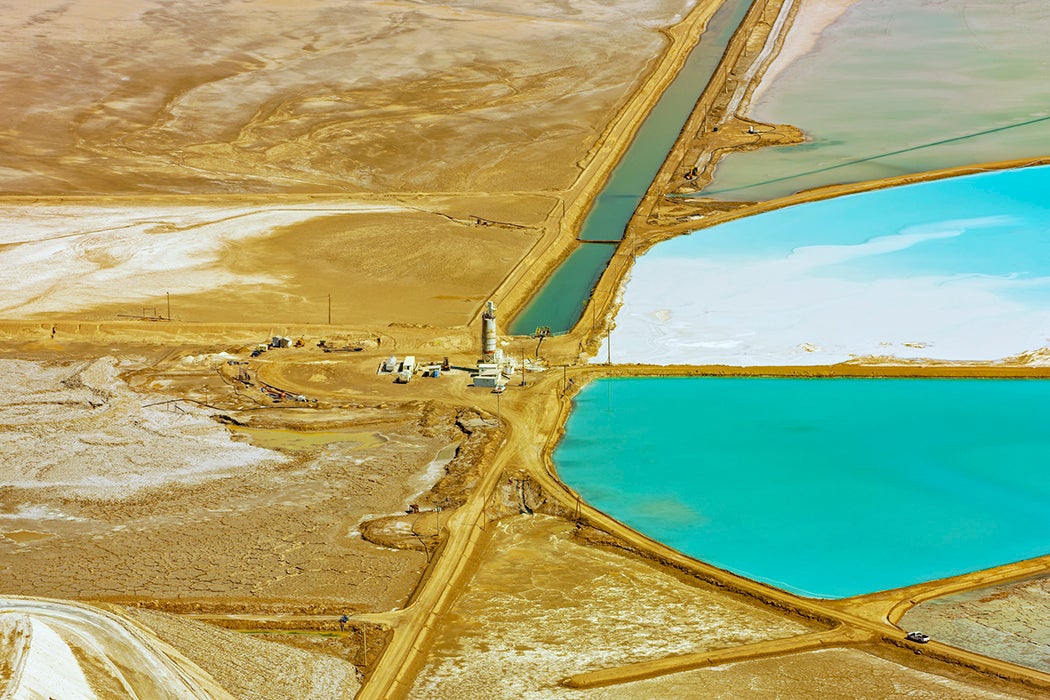As US President Donald Trump transitions back into the White House, questions around the impact of possible “Trump Tariffs” have emerged in relation to natural resource extraction. While Trump has made clear his priority of fossil fuel expansion (read: “Drill, Baby, Drill”), critical minerals, such as lithium, copper, cobalt, graphite, nickel, manganese, and rare earth elements, are indispensable to the low-carbon energy transition, driving a global surge in demand that shows no signs of abating. As their extraction becomes pivotal to enabling the growth of sustainable technologies, as well as maintaining other forms of critical infrastructure, it also emerges as a focal point in debates surrounding environmental justice and the true costs of a green transition. Could tariffs proliferate energy sovereignty in the US or exacerbate environmental inequities by continuing paradigms of extractivism?
US Tariffs and Domestic Mineral Production
Paradoxically, the foundation of clean energy lies in the mining industry. While the raw value of these minerals is significant, their true impact emerges through refinement and integration into high-value technologies, fueling markets worth billions, explains scholar Nikos Tsafos in statement made before the Standing Committee on Industry and Technology of the bipartisan Center for Strategic and International Studies. Electric vehicle batteries, wind turbines, and solar photovoltaics demand significantly higher quantities of minerals and rare earth elements compared to their conventional counterparts. The extraction process alone generates billions of tons of CO2 emissions—comparable in some instances, such as lithium mining, to the carbon footprint of coal mining, yet without any meaningful regulatory safeguards typically associated with fossil fuel industries. In the “Lithium Triangle” (Argentina, Bolivia, and Chile), lithium extraction has caused severe environmental harm, writes Samar Ahmad, including water and soil contamination, amid drought-stricken regions and energy-intensive production. The rising demand for resources fuels unsustainable mining, exposing tensions between green goals and their environmental costs.
At first glance, tariffs appear to boost US self-reliance on critical minerals and reduce dependence on foreign imports, generating energy sovereignty and incentivizing the return of production back home. Looser regulations in the domestic mining industry to streamline permitting processes are expected to pave the way for producers to launch or scale up their critical mineral extraction efforts more easily. As Tsafos points out, by mid-century, the geopolitics of energy will largely pivot to critical minerals and hydrogen, with trade in these resources projected to rival the scale of oil’s dominance in 2020, putting the US again at the center of global power dynamics and economic dependencies. According to the Oxford Institute for Energy Studies, the US push for domestic mining and processing is a challenge to China’s dominance over 90 percent of global rare earth ore processing and critical materials like neodymium magnets, which secure its geopolitical leverage. Such measures risk destabilizing global supply networks, straining reliant industries, and intensifying geopolitical tensions. Tariffs on imports may escalate costs, raising doubts about the viability of US domestic production against China’s efficient supply chain.
Resource Colonialism and Environmental Justice
For centuries, natural resource extraction has fueled and perpetuated the enduring legacy of colonial control. Historian Myrna Santiago argues that the surge in critical minerals mining is reigniting patterns of resource colonialism, extracting labor and minerals from local communities to benefit Western-owned industry and leaving sovereign nations with extreme pollution burdens. This is what scholars Amber Murrey and Sharlene Mollett name as “non-metaphorical extractivism,” or the action of the imperial state and corporate entities violently forcing Indigenous peoples and local communities off of their lands to recast nature, bodies, knowledge, and labor power in the interest of capital accumulation. Murrey and Mollett make clear that addressing this paradigm requires resisting colonial modes of power, ensuring that the burdens of sustainable technology manufacturing are not disproportionately shouldered by those already marginalized as the benefits flow to the privileged.
Weekly Newsletter
This prioritization of economic and industrial growth over stringent environmental safeguards, such as the proposal to overturn decadal moratoriums on mining, enables resource extraction in sensitive or previously protected areas within US borders, such as the Superior National Forest in Northern Minnesota and the Arctic National Wildlife Refuge. The Trump administration’s rescindment of more than eighty initiatives directing federal agencies to incorporate environmental justice into their missions may leave communities burdened by legacy mining pollution vulnerable. Additionally, Trump’s executive order to stop the spend-down of the Inflation Reduction Action, a significant element of the Green New Deal (or, as Trump styles it, the Green New Scam), will halt federal investment in green technology deployment.
The intersection of US tariffs, critical minerals, and the green transition reveals a complex landscape of competing priorities. The path to true energy sovereignty and environmental justice lies in embracing a regenerative economy, grounded in circularity, writes Amanda Kissel. As defined by the Climate Justice Alliance, a regenerative economy is an economy grounded in mutual aid, care, and solidarity, recognizing that all materials can be regenerated into valuable assets rather than waste products. This includes prioritizing mineral and battery recycling, enforcing extended producer responsibility, and supporting a just transition for workers in extractive industries. By reducing reliance on new mining and investing in sustainable alternatives, the US can achieve greater mineral sovereignty while mitigating the environmental and social costs of resource extraction. Achieving a balance between energy independence, environmental protection, and social equity requires bold policy action and a commitment to breaking free from the extractivist paradigms of the past.







